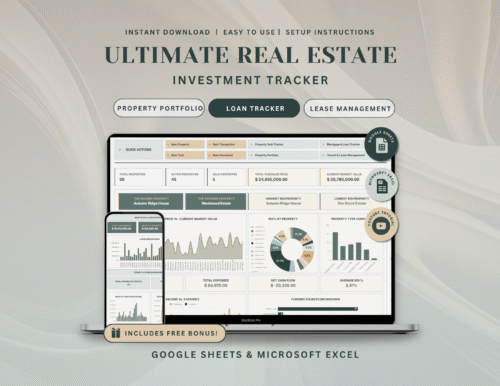Debt is a financial burden many individuals face today. It can feel overwhelming, but by employing the right strategies, you can tackle your debt head-on. Two popular methods for efficient debt repayment are the Snowball Method and the Avalanche Method.
Each offers unique benefits and can accelerate your journey to financial freedom. Understanding these strategies is crucial to choosing the one that aligns best with your financial goals and personal preferences.
In this blog, we’ll explore these methods in detail to help you comfortably navigate your debt elimination journey.
Understanding the Debt Snowball Method
The debt Snowball Method is a payoff debt strategy championed by personal finance expert Dave Ramsey. The core concept involves prioritizing your debts based on their size, starting with the smallest. To implement this method, you gradually pay off your debts from the smallest balance to the largest, regardless of the interest rate. Here’s how it works:
- List Your Debts: Begin by listing all your debts from smallest to largest balance.
- Minimum Payments: Ensure you make minimum payments on all debts, thereby avoiding any penalties or increased interest.
- Focus on the Smallest Debt: Allocate any extra money towards paying off the smallest debt first.
- Repeat the Process: Once the smallest debt is paid off, move onto the next smallest debt with the newfound momentum, applying any freed-up resources to it as well.
The rationale behind the Snowball Method is psychological. By knocking out the smallest debts first, you gain a sense of accomplishment and motivation, which propels you to tackle the larger debts with increased vigor.
• Advantages of the Snowball Method
The Snowball Method offers significant benefits, particularly for those who need encouragement to stay disciplined with their debt repayments. Some key advantages include:
– Increased Motivation: Early victories in paying off smaller debts foster confidence and the motivation to continue.
– Simplicity: This method is straightforward to implement and understand, making it accessible for many people without requiring complex financial calculations.
– Psychological Boost: The satisfaction and relief from clearing out debts quickly can be immensely empowering, reinforcing positive financial habits and discipline.
• Challenges and Considerations
Though beneficial, the Snowball Method is not without its drawbacks. Here are several considerations to bear in mind:
– Costly Interest Accumulation: Since the focus is not on interest rates, you might end up paying more in interest charges over time if larger debts with high-interest rates are left for later.
– Not Optimal for Everyone: This approach may not be the best fit for individuals with high financial literacy who would prefer methods that reduce total interest paid.
– Discipline Required: Maintaining the discipline to consistently apply extra payments beyond minimums can be difficult, especially if an unexpected expense occurs.
• Who Should Consider the Snowball Method?
The Snowball Method is ideal for those who need the motivation of quick wins. If you find that seeing progress in tangible, bite-sized milestones keeps you driven, this method could be perfect for you.
It’s particularly effective for people who have multiple small debts and really want to gain control over their financial situation without getting bogged down in the numbers.
Understanding the Debt Avalanche Method
The Avalanche Method, often favored by those with a keen eye for minimizing costs, focuses on attacking debts with the highest interest rates first. By doing so, you reduce the overall amount of interest paid during the repayment process. Here’s how the Avalanche Method is employed:
- Order Debts by Interest Rate: List all debts starting from the highest interest rate to the lowest.
- Make Minimum Payments: Ensure you cover minimum payments on all debts, just like in the Snowball Method.
- Target High-Interest Debts: Use any additional funds to pay down the debt with the highest interest rate.
- Eliminate and Move On: Once a high-interest debt is cleared, apply that payment to the next debt with the next highest interest rate until all debts are repaid.
The goal is to focus on saving money by avoiding excessive interest expenses, enabling a more efficient repayment process.
• Advantages of the Avalanche Method
The Avalanche Method is predominantly esteemed for its cost-saving potential, making it a sensible choice for many financially driven individuals. Key advantages include:
– Lower Total Interest Paid: By focusing on high-interest debts, you ultimately reduce the total amount of interest incurred during repayment.
– Efficiency: This method takes a more analytical approach, cutting down on unnecessary interest expenses and accelerating the overall payoff timeline.
– Financial Discipline: Promotes a fiscally prudent mindset, guiding one to create more strategic financial decisions.
• Challenges and Considerations
Despite its advantages, the Avalanche Method has its own set of considerations and challenges, which include:
– Delayed Gratification: Since significant wins can take longer to achieve, initial motivation may wane compared to the immediate wins seen with the Snowball Method.
– Complexity: Requires more intensive tracking and understanding of interest rates and financial planning, which may be daunting for some individuals.
– Patience is Key: Results take time, and the lack of immediate payoff successes can be discouraging for those seeking quick results.
• Who Should Consider the Avalanche Method?
This method is a great choice for those who are numbers-oriented and focused on saving the most money. If paying as little as possible in interest matters more to you than quick psychological victories, then the Avalanche Method might be your cup of tea.
It’s particularly useful for those who have larger debts with high-interest rates that accrue significantly over time.
Comparing Snowball and Avalanche Methods
When tackling debt repayment, choosing the right strategy can be crucial to success. The Snowball and Avalanche methods each offer distinct paths to eliminating debt, and understanding their differences is essential in selecting an approach that aligns with your financial goals.
• Key Differences
The primary difference between the Snowball and Avalanche methods lies in how debts are prioritized for repayment:
– Snowball Method: This approach emphasizes paying off debts starting with the smallest balance first. By eliminating the smallest debt quickly, you can gain momentum and confidence, akin to a snowball gathering speed as it rolls downhill. You continue to pay minimum payments on all other debts, directing any extra funds towards the smallest balance until it is fully paid off. Once the smallest debt is cleared, you move on to the next smallest balance.
– Avalanche Method: Conversely, the Avalanche method targets debts with the highest interest rate first. This method aims to minimize the total interest paid over time, as high-interest debts often compound rapidly. You pay the minimum on all debts and allocate additional payments to the debt with the highest interest rate until it is eradicated. Afterward, you proceed to the next highest interest rate debt.
Both methods are effective but cater to different priorities—either quick wins with the Snowball or interest savings with the Avalanche.
• Factors to Consider When Choosing
Choosing between Snowball and Avalanche can feel like deciding between two new flavors of ice cream – both appealing, yet distinct.
– Motivation and Psychology: If seeing quick victories motivates you, the Snowball Method might be your go-to. Knocking out smaller balances gives immediate wins and a confidence boost.
– Total Interest Costs: If you’re all about saving money in the long run, the Avalanche Method may be more your style. This strategy could save you more on interest payments over time, especially if you have high-interest debts.
– Financial Discipline: Think about your financial habits. Are you disciplined enough to stay committed to a plan without needing immediate rewards? If so, Avalanche could be ideal. If not, Snowball might better suit your character.
Tips for Successful Debt Repayment
Regardless of which method you select, implementing certain practices can enhance the effectiveness of your debt repayment plan.
• Establishing a Budget
Developing a detailed budget is foundational to successful debt repayment:
– Begin by listing all sources of income and expenses.
– Identify areas where you can reduce spending, such as dining out less or canceling unused subscriptions.
– Redirect any freed-up money towards your debt repayment plan.
A budget provides a clear roadmap for where your money goes each month, ensuring you can make consistent payments towards your debts.
• Staying Consistent and Motivated
Maintaining consistency and motivation is critical for long-term success:
– Set clear, achievable goals with specific deadlines for each debt.
– Celebrate small victories as you eliminate debts, whether by treating yourself to a small reward or taking time to reflect on your accomplishments.
– Surround yourself with support, whether from friends, family, or online communities dedicated to debt payoff.
By actively engaging with the process, you can sustain your drive and stay committed to your plan.
• Seeking Professional Advice
Consulting with financial advisors can provide additional insights and strategies:
– A financial advisor can offer personalized advice tailored to your financial situation and goals.
– They can help optimize your budget, suggest additional ways to save on interest, or assist with negotiations for lower interest rates on existing debts.
– Professional guidance can demystify complex financial concepts, empowering you with the knowledge needed to make more informed decisions.
By combining professional advice with a disciplined approach, you’re more likely to accelerate your journey to becoming debt-free.
Conclusion
In conclusion, both the Snowball and Avalanche methods offer effective strategies to swiftly eliminate debt, each catering to different psychological and financial tendencies.
The Snowball method is excellent for those who thrive on small victories and the motivation they provide. On the other hand, the Avalanche method appeals to individuals looking to minimize interest costs and optimize their financial strategy. Start by assessing your personal preferences and financial situation to choose the most suitable method for your debt repayment journey.
Whether you seek motivation through small wins or prioritize financial efficiency, each method offers a structured path towards debt freedom and financial stability.
By implementing one of these methods, you can transform debt elimination from a daunting task into an achievable goal.
-
Debt Payoff Calculator Google Sheets Template
$20.00$40.00 -
Real Estate Investment Tracker
$15.00$30.00


